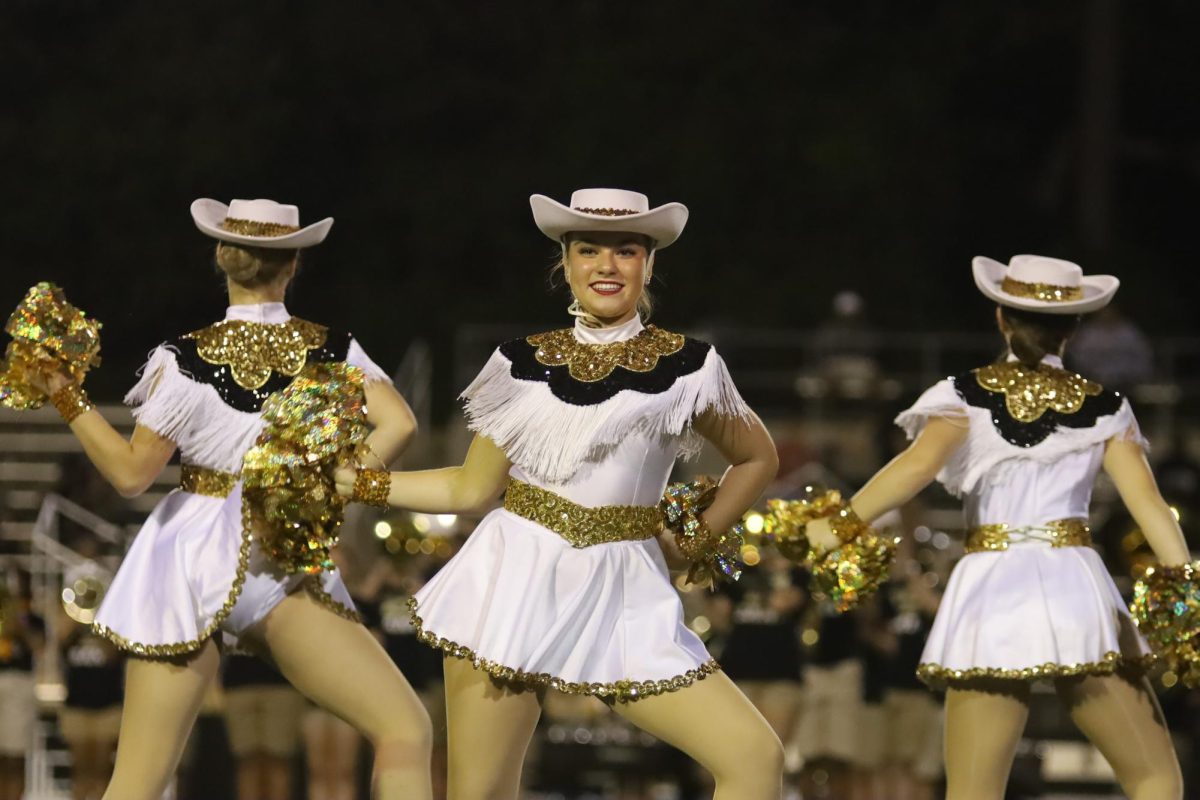At 6:10, senior Loriann Hensel is ready to head out the door.
By the time she gets to the high school, the sun is barely visible.
When warm-ups start, the light has just broken through the horizon.
After the 30 minute work out, she’s ready to play.
Play the clarinet that is.
“We’re outside in the heat as much as other sports, if not longer,” Loriann said. “We’re not just standing out there. We do running drills, do a dance and stretch block, and rehearse our music. ”
Cheer, football, golf — all considered sports by some people, but students in band, drill team, and color guard argue that their activities involve just as much physical exertion, sweat, and hard work.
“For the most part, color guard is a sport,” sophomore Aubryn Franklin said. “We run, jump, dance, and toss. We also get hurt a lot.”
The Women’s Sports Foundation defines sport as “a physical activity that involves propelling a mass through space or overcoming the resistance of a mass, or the primary purpose of the competition is a comparison of the relative skills of the participants.”
Sophomore band member Kaydyn Roper agrees with that definition. She considers band a type of performing art.
“I think a sport is something that you can compete in,” Kaydyn said. “And even though we compete in band, I don’t consider it a sport because we don’t score points or anything. We get ratings instead.”
But band isn’t the only subject of debate. Dance often blurs the line between sport and visual art. Even most dancers, like senior Showstopper Jordan Conley, don’t consider drill team to fit in a specific category.
“It depends on the year because if we go to nationals and have two competitions, it’s like competition dance, so it’s a sport,” Jordan said. “But regular old drill team on the sidelines though is not really a sport.”
The controversy isw, what makes a sport, a sport? How much physical fitness and coordination is required? Do competitions have to be structured in a particular way?
According to the Women’s Sports Foundation, an activity involving competition doesn’t always mean it’s a sport.
“Drill team, baton twirling, and marching band may periodically act like sports teams when they engage in state or regional competitions,” Women’s Foundation said. “The existence of a competitive opportunity though does not qualify the extracurricular activity as an athletic team or sport.”
Even cheer has been a subject of this debate for some time. Because there are different kinds of cheer, such as sideline cheer and competition cheer, it can be hard to categorize it in a universal way.
People like junior Halston Baca who view cheer from the stands, don’t see cheer as a sport because for them it’s more of a form of entertainment.
“In cheer you’re competing sometimes, but you’re not competing against your opponent at the exact same time as you like you are with basketball or football,” Halston said. “You also don’t use tools or equipment in cheer like you do in other sports. There’s no helmets, clubs, pads, or anything like that.”
Although deciding if an activity is a sport or not is a controversial topic, Aubryn feels that no matter what you do, the value of the extracurricular(s) does not change.
“As long as you put time and effort into what you do, I don’t think it matters if you decide it’s a sport or an extracurricular,” Aubryn said. “The people who experience it, should be the ones who have a say in it.”
Game Time or Pastime?
Students dispute on what types of extracurriculars are defined as sports
Senior Blakely Duke performs at the halftime show against Fresco Memorial
0


